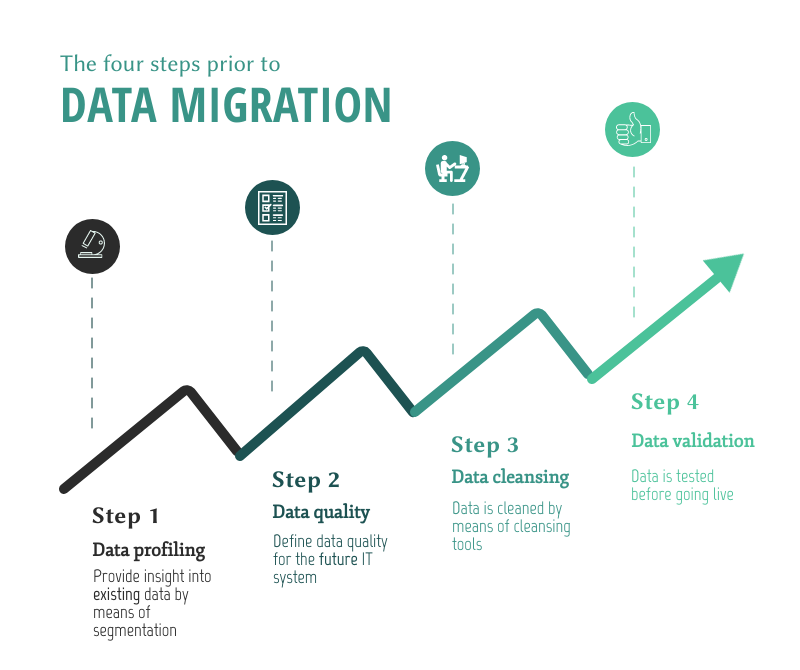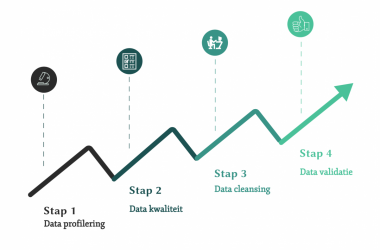A successful data migration is necessary for an effective ERP implementation. How do you tackle this? Tips and tricks.
Data migration is necessary for the transformation to a new ERP package. For many people, data migration simply means the export of business data from the old IT system and the import to the new system. All too often, employees assume that technicians have to solve the obstacles during this migration process. However, that statement is incorrect. The scope of data migration during a digital transformation is not just the transition of data from one system to another. It also means that business analysts or employees must profile the data, check it on quality, clean it and validate it.
The importance of data migration
If data migration is not seen as a central point of attention, there exists a risk that data will be transferred incorrectly into the new system. In other words: garbage in, garbage out. This leads to a new system functioning sub-optimally. Hence, an expensive vicious circle of design-build-test-rework can arise. In addition, incorrect data in the system will lead to incorrect reporting. Thus, the key to success for many companies lies in making a thorough analysis of their own in-house data. Based on the data, a company can acquire the right strategic insights.
Steps towards a succesful data migration

First and foremost, the data migration team must gain insight into the existing data from the various source systems. This is called data profiling, the first step for a successful data migration. It is not recommended to dive headlong into all data. Segmentation can help to gain insights faster and to analyze the data better. This phase goes hand in hand with the definition of the data quality needed to feed the future, new ERP system. This both on a technical and a business level. It is necessary to change or eliminate data that does not meet the set quality requirements.
Next, the data cleansing or cleaning of the data can start. In order to perform cleansing, a wide range of cleansing tools exist.
Finally, a test phase and validation is necessary before the data goes "live" into the system. We call this step data validation.
It is important that both technicians and non-technical profiles systematically go through the above phases to identify potential errors or bottlenecks prior to data migration.
Follow the Pareto 80/20 rule
Based on our experience in different data migration stories, we would like to give you the following tip. Don't be blinded by the enormous amount of data in your company. Do not spend endless hours analyzing all your data (100%), but segment and prioritize. First ask yourself which 20% of your data, or core data, is necessary for the proper functioning of your company and must therefore be migrated to your new ERP system. With this statement we refer to the Pareto 80/20 rule, which teaches us that in most cases 20% of the data is responsible for the performance of 80% of the processes. Nevertheless, data migration is not an endpoint here. It is an iterative process in which regular adjustment of your data quality will ensure that the ERP system optimally supports your business.
Why horsum?
At horsum we have extensive experience in guiding the data migration phase. As an external partner we use our expertise to successfully complete this crucial project phase in an objective and efficient manner. Our perspective as an outsider allows us to question existing data and identify problems or opportunities. Since we have the knowledge of semi-automatic cleansing tools, we can guide you as an independent consultant in data profiling, quality control, data cleansing and data validation.
Convinced or further questions? Do not hesitate to contact us.
Justine Rousseeuw - March 3, 2020

